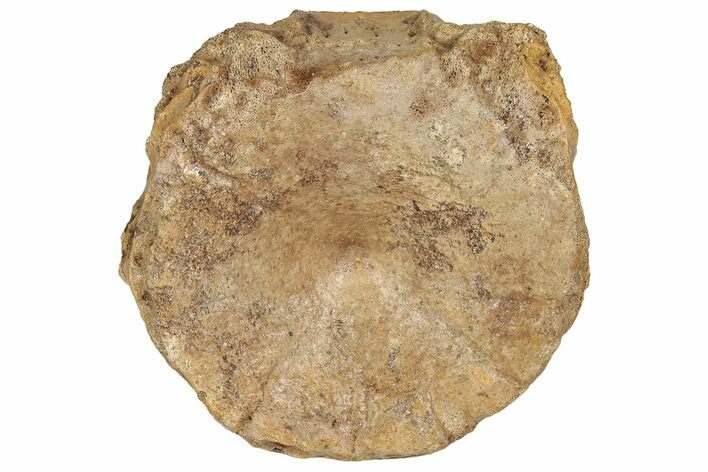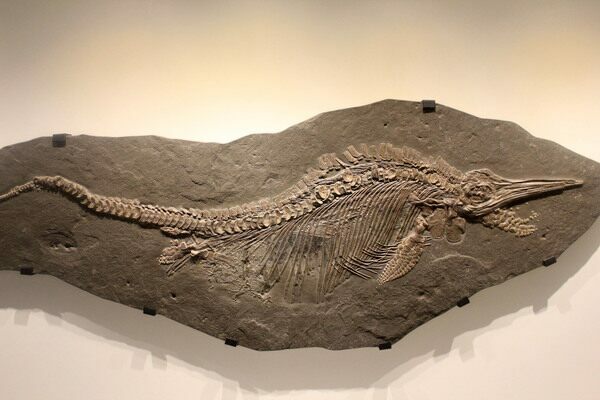This Specimen has been sold.
3.3" Fossil Ichthyosaur (Brachypterygius) Vertebra - England
This is a 3.3" wide ichthyosaurus (Brachypterigus cf. extremis) vertebra centrum from the Jurassic-aged Kimmeridge Clay. It was dredged from Weymouth Harbour in Dorset, England and would be Upper Jurassic in age, or approximately 155 million years old.
It comes with an acrylic display stand.
It comes with an acrylic display stand.
Ichthyosaurs were swordfish-like marine reptiles of the order Ichthyosauria. They had torpedo-shaped bodies with long, narrowly pointed jaws, large pectoral fins, and crescent-shaped tails. They were the high-speed predators of the Jurassic seas, indicating they ate a fish diet. This is confirmed by analysis of coprolites (fossil feces). They evolved about 250 million years ago, hitting their diversity apex during the Jurassic: there are currently 97 known genera. They may be descended from diapsids like dinosaurs and birds, but a recent theory suggests they may have descended from a distant relative of turtles. Ichthyosaurus had disappeared from the fossil record by about 90 million years ago. It is not known why they died out.
Ichthyosaurs are not fish. Their resemblance to them is an example of two groups adapting to their environment with similar adaptations without having a common ancestor, otherwise known as convergent evolution. Ichthyosaurs were reptiles with lungs that had to surface to breathe, while fish have gills that take dissolved oxygen from water. Ichthyosaurs looked like swordfish or dolphins: their bodies were larger near the head and tapered to a sleek, crescent-shaped tail.
Ichthyosaurs had one of the largest eyes relative to body size of any organism. This may allowed them to better move throughout the water column to find prey, reaching tremendous speeds with their crescent tails. Some estimates put the top speed of the fastest species above 30 miles per hour. Like most fish living today, Ichthyosaurus was likely dark colored on its back and sides and light on its belly as a form of camouflage.
Ichthyosaurs are not fish. Their resemblance to them is an example of two groups adapting to their environment with similar adaptations without having a common ancestor, otherwise known as convergent evolution. Ichthyosaurs were reptiles with lungs that had to surface to breathe, while fish have gills that take dissolved oxygen from water. Ichthyosaurs looked like swordfish or dolphins: their bodies were larger near the head and tapered to a sleek, crescent-shaped tail.
Ichthyosaurs had one of the largest eyes relative to body size of any organism. This may allowed them to better move throughout the water column to find prey, reaching tremendous speeds with their crescent tails. Some estimates put the top speed of the fastest species above 30 miles per hour. Like most fish living today, Ichthyosaurus was likely dark colored on its back and sides and light on its belly as a form of camouflage.
SPECIES
Brachypterigus cf. extremis
LOCATION
Weymouth Harbour, Dorest, England
FORMATION
Kimmeridge Clay
SIZE
3.3 x 3 x 1.25"
CATEGORY
SUB CATEGORY
ITEM
#238918
We guarantee the authenticity of all of our specimens.
 Reviews
Reviews














